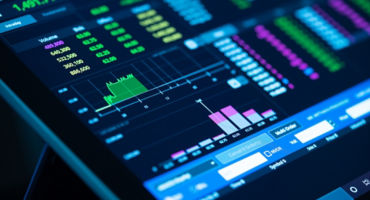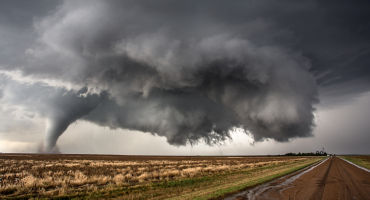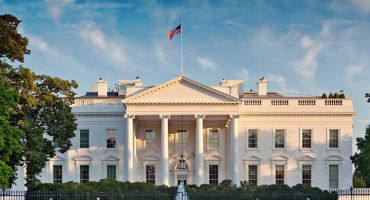Skip to main content
- Funds
- Insights
- Capabilities
- About Us
- My Account
Our Funds
Fund Documents
Global Multi-Strategy Fund
The views expressed are those of the author at the time of writing. Other teams may hold different views and make different investment decisions. The value of your investment may become worth more or less than at the time of original investment. While any third-party data used is considered reliable, its accuracy is not guaranteed.
With commodity inventories at multi-decade lows, is rising cross-asset-class volatility inevitable? I believe the tragic Russia/Ukraine crisis demonstrates why the answer is likely yes.
Recently, experts from across our investment platform went back and forth about the Russia/Ukraine crisis. During that debate, Global Industry Analyst Tim Casaletto made a point that reflects the wide-reaching investment implications of the conflict:
“The current situation strengthens the long-term growth outlook of renewables in Europe. This is because: (a) the more wind/solar power Europe has, the less dependence it will have on Russian gas imports; and (b) the cost to build new renewables in Europe is far lower than the current power prices we’re seeing…To put numbers to this, it costs roughly €40/MWh on average to build new wind/solar in Europe versus current European power prices that are closer to €150 to €200/MWh, depending on the country."1
As has been discussed by many pundits and politicians — including former US Secretary of State Condoleezza Rice in a recent call with Wellington investors — the Russia/Ukraine situation is tied to gas prices in Europe. Russia supplies roughly 35% of Europe’s natural gas.2 Record-high prices have been driven by record-low storage volumes. And “without increased gas flows from Russia, next winter becomes extremely problematic and a true [European] energy crisis would appear unavoidable,” as Equity Analyst Jordan McNiven noted. This Russian leverage is likely central to why the Putin government has identified now as the time to violently escalate its geostrategic push to cultivate “buffer states.”
In recent months, we have written often about the cyclical and structural reasons to believe today’s commodity supply shortfalls will persist. The COVID pandemic continues to disrupt production and distribution. Producer discipline and underinvestment is restraining the supply response. And with decarbonization ambitions intensifying globally, production costs are likely to inflate, limiting new projects and, therefore, exacerbating supply/demand imbalances.
The Russia/Ukraine conflict is a vivid demonstration of the broad and potentially seismic implications of low commodity inventories. Constrained commodity supplies could determine the direction of everything from central bank policy to decarbonization to globalization and the future of great-power competition. In turn, I believe it is essential that all capital allocators contemplate how we got here and where we could be headed.
Since the spring of 2020, commodity inventories have been drawing down at a near-record rate. Figure 1 shows the 12-month change in aggregate commodity inventories. Given this rapid depletion, “inventories are [now] the lowest I have on record going back to at least 1990,” as Commodities Portfolio Manager David Chang noted in a recent webinar discussing inflation.
This disconnect between commodity supply and demand was likely foreseeable. The metals/mining sector illustrates this story. A telling chart (Figure 2) from Global Industry Analyst Andrew Byrne shows the production output of large-cap global miners, indexed to 2010, versus real global GDP. Byrne encapsulated the significance as follows:
“The mining sector has been ex-growth since 2015…To put it simply, global demand for metals is growing and compounding on the back of population and GDP growth, urbanization, and decarbonization. Supply is not growing and may not grow meaningfully this decade.”
Recently, a metals trading giant issued a stark warning about aluminum: “The deficit is now moving at such a speed that it’s unsolvable…the world will run out of stockpiles by early 2024,” as Bloomberg reported. Aluminum prices have more than doubled since the first 2020 COVID shutdowns and now sit near a 13-year high. 2
And demand for aluminum looks poised to continue to spike. Just consider the decarbonization targets set by the new German government coalition, which aim to make renewables 80% of the nation’s energy mix by 2030, up from 45% today.1 As Tim Casaletto has calculated, this would require roughly 25 gigawatts (GW) of new renewables per year. And just one GW of new solar panel capacity requires more than 10,000 tons of aluminum, according to Bloomberg calculations.2
Commodity supplies are likely to be further complicated by climate change itself. Coffee, for example, has given a glimpse of this potential. Over the past year, coffee prices have nearly doubled.2 Two years of extreme drought have compromised Brazilian growing seasons. Based on coffee growers monitored by the ICE Futures US Exchange, Brazilian stockpiles appear to be the lowest they’ve been in over 20 years. As climate change intensifies, we expect more frequent and more severe disruptions to commodity production and distribution, generating even greater volatility in supply/demand imbalances.
As the Russia/Ukraine crisis exemplifies, a world of tight and uncertain commodity supplies is likely a world of heightened volatility. And the sustainability revolution is poised to only exacerbate inflationary pressures — constraining supplies (via regulation and investor divestiture) faster than demand, especially as GDP growth rebounds post-pandemic. It is an environment where deep, research-driven active management could prove a defining edge. Recognizing (and exploiting) the company-by-company, market-by-market, and nation-by-nation implications of higher commodity prices will require diverse expertise and the ability to allocate with agility.
1 Source: Wellington Management estimates, Bloomberg, as of February 2022.
2 Source: Bloomberg, as of February 2022.
What markets are missing on critical minerals
Geopolitical Strategist Thomas Mucha highlights the importance of critical minerals in US-China relations, details the impact on global markets, and identifies the investment implications.

Five ways to find opportunity in a new world (dis)order
Geopolitical Strategist Thomas Mucha analyzes the investment implications of five global themes that speak to the need for strategic adaptation in a turbulent world.

Brave New World: “US vs them” world order emerges
Geopolitical Strategist Thomas Mucha profiles the shifts signaling increased global policy friction and national security related opportunities for investors.

AI and national security: What markets are missing
Geopolitical Strategist Thomas Mucha analyzes the role of AI in shifting national security dynamics and its influence on future investment strategies.

Fiscal versus tariffs: what wins out for Europe?
Just as investors were starting to explore the potential for growth in Europe, Trump’s tariffs landed. To what extent is the case for Europe still intact?

The US equity rotation: Where have all the good vibes gone?
After riding into 2025 on a wave of post-election euphoria, the US stock market has struggled to find its footing so far this year. Global Investment and Multi-Asset Strategist Nanette Abuhoff Jacobson looks at what’s changed in the markets and what it might mean for investors.

Geopolitics in 2025: Risks, opportunities, and deepening uncertainties
Geopolitical Strategist Thomas Mucha outlines his structural, policy, and geopolitical outlook for the year.

Emerging markets under Trump 2.0: expect the unexpected
Portfolio Manager Dáire Dunne and Investment Director Irmak Surenkok discuss what Trump 2.0 entails for emerging markets investors and what useful lessons they can learn from his first term.

What an “America first” foreign policy may mean for markets
Fixed Income Portfolio Manager Brij Khurana explores the potential market impacts of President Trump's "America first" foreign policy. From regional hegemony to global economic dominance to tariffs applied for strategic geopolitical gain, discover how these shifts could affect investors.

A guide to investing in the age of anxiety
There's a long list of issues worrying asset owners, from geopolitical risk to high valuations. To help, Head of Multi-Asset Strategy Adam Berger offers coping tips for an uncomfortable investment backdrop and a world where investing rules of thumb may be broken.

Trump 2.0: US election market impacts
In the wake of the US election, macro strategists Juhi Dhawan and Michael Medeiros join host Thomas Mucha to discuss the market, policy, and geopolitical implications of Trump 2.0.
URL References
Related Insights